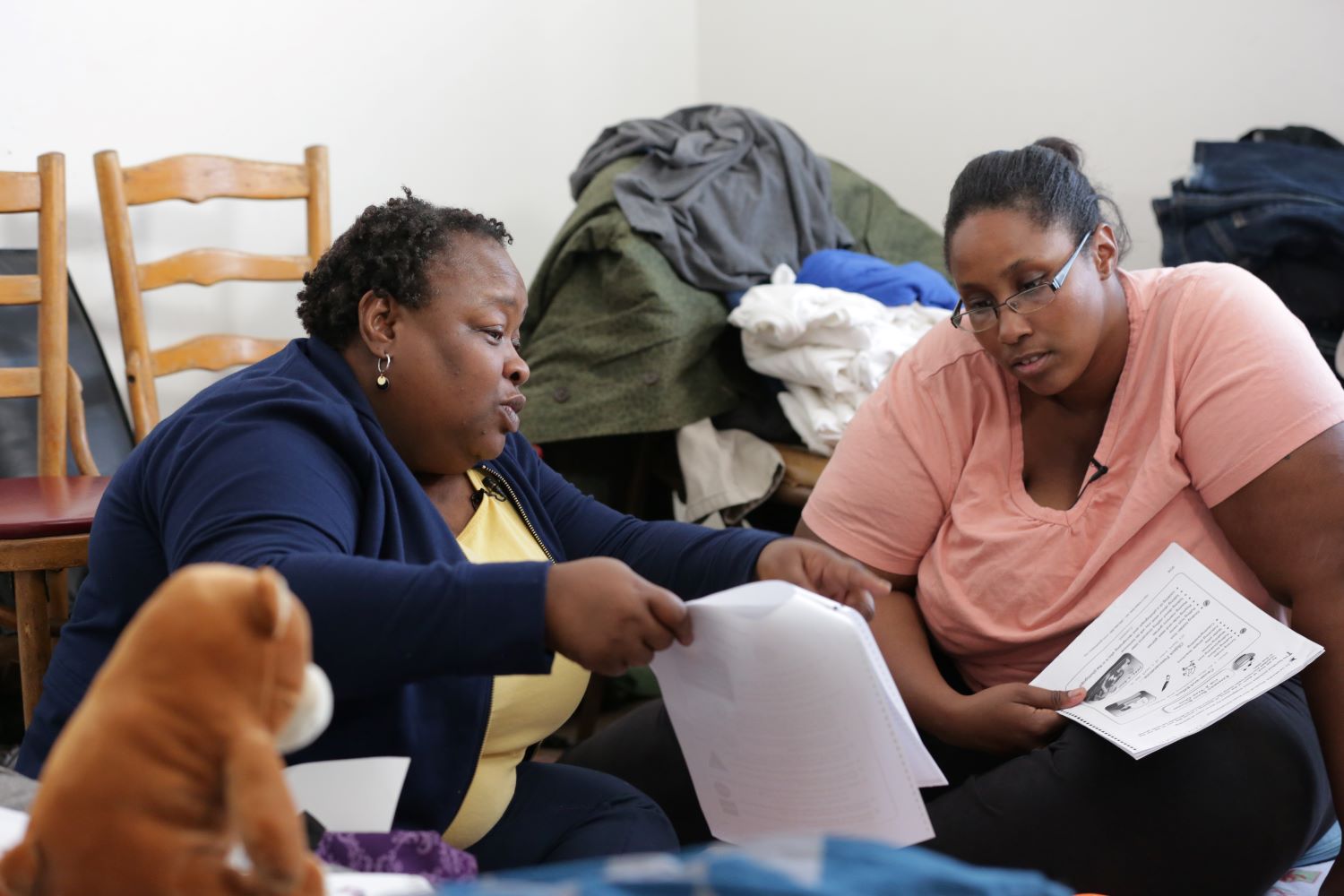Open Doors-Center for Social Emotional Foundations for Learning PIWI-Clip 8A
Woman 1: Welcome, everybody. We're so glad that you're here today. And I know that some of you have been in the group before, but for some of you, this is new. So, what I want to start with is just going over the schedule for the day, so you have some idea of what's going to happen.
So, we'll start with the hello song, which uses your name and your child's name, and then we'll do an opening discussion where we're gonna talk about what the focus is for today -- so, what you'll be watching your child do and trying with your child, some new things.
So, we'll talk about that, and then we'll actually do our parent/child-observation playtime, where you play with your child. Then, we will do snack time, and after we do snack time, we'll transition back to this area, and we'll do some fun parent/child songs and games. And then we will have our closing discussion to talk about what you learned when you played with your child. Did they show you something new today that they did, or, you know, what did they like best? So, we'll talk about that, and then we'll have our goodbye song.
So, let's get started with the hello song. And I have the words right here so everybody can sing along. And what we'll do is we'll start with my name first and then Susan. She's the other facilitator for the group. And then we'll just go around and sing everybody's name. So, here's the tune, but you guys have to help me.
[ To the tune of "Frere Jacques" ]
♪ Hello, Tweety ♪
♪ Hello, Susan ♪
♪ How are you? ♪
♪ How are you? ♪
♪ It is good to see you ♪
♪ It is good to see you ♪
♪ Come and play ♪
♪ Come and play ♪
Then we'll do --
All: ♪ Hello, Melissa ♪
♪ Hello, Mimi ♪
♪ How are you? ♪
♪ How are you? ♪
♪ It is good to see you ♪
♪ It is good to see you ♪
♪ Come and play ♪
♪ Come and play ♪
♪ Hello, Elizabeth ♪
♪ Hello, Aidan ♪
♪ How are you? ♪
♪ How are you? ♪
♪ It is good to see you ♪
♪ It is good to see you ♪
♪ Come and play ♪
♪ Come and play ♪
♪ Hello... ♪
♪ Hello, Mabel ♪
♪ How are you? ♪
♪ How are you? ♪
♪ It is good to see you ♪
♪ It is good to see you ♪
♪ Come and play ♪
♪ Come and play ♪
Woman 1: Yay!
Woman 1: That was good. That was a great first-time hello song.
Close
 Good planning and preparation lead to meaningful, purposeful group socializations that support children's learning and development by strengthening the parent-child relationship. Home visitors need the right skills and knowledge to engage parents in a group setting as well as individually. As their supervisor, consider the strengths of your home visitors and what they need to plan and conduct effective group socializations. You provide support, including observations during socializations, supervision, and professional development opportunities. You also develop a budget that ensures the financial resources needed to provide all required services are available.
Good planning and preparation lead to meaningful, purposeful group socializations that support children's learning and development by strengthening the parent-child relationship. Home visitors need the right skills and knowledge to engage parents in a group setting as well as individually. As their supervisor, consider the strengths of your home visitors and what they need to plan and conduct effective group socializations. You provide support, including observations during socializations, supervision, and professional development opportunities. You also develop a budget that ensures the financial resources needed to provide all required services are available.